Can Turtles Leave Their Shells?
Being familiar with turtle species, when you hear the word turtle, you visualize an animal with robust, bonny shells in your mind. But can you imagine these reptiles without shells? Or have you ever thought about, “can turtles leave their shells?”
No, turtles can’t get out of their shells; they are born or hatched with covers, and this rugged structure is attached to their bodies. To be exact, the turtle’s shell is fused to its skin, nerves, ribs, and spinal cord and is an essential part of its anatomy, much like our skeleton is for us. And turtles’ shells play a crucial role in keeping them alive in the wild.
That said, do you know if there are turtles without shells? Or can turtles lose their shells? Let’s read further to get answers to these questions.
Related article about turtles:
All The Reasons Why Turtles Can’t Leave Their Shells?
The answer to this question may seem obvious, but the more you think about it, the more perplexed you may become. And here are all the reasons why turtles can’t leave their shells:
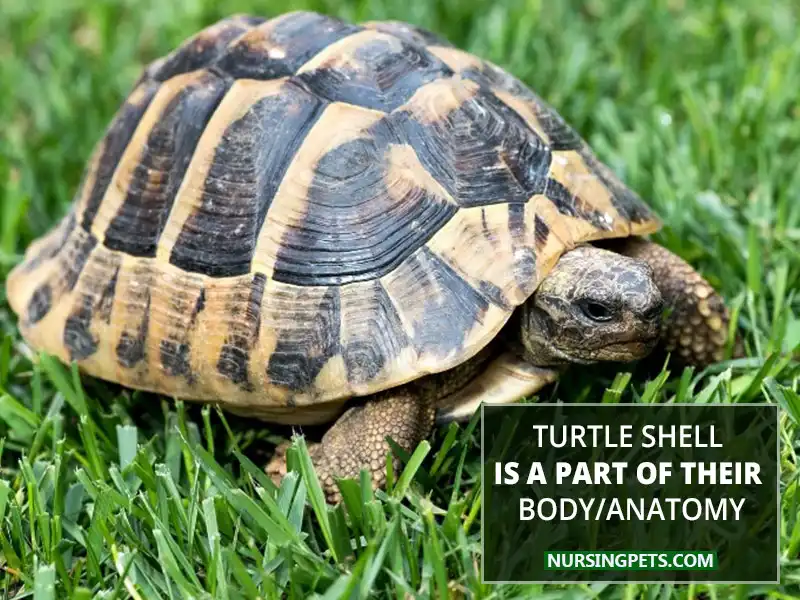
01. Turtle’s shell includes bones and nerve endings that it needs to live and function. It is an important part of a turtle’s anatomy, which includes its rib cage, spinal cord, and nerve endings. Without it, a turtle would likely not survive even a few seconds or minutes.
02. The shell is primarily made up of two things: keratin and bone. It has two types of bones – the skeletal and dermal bones. The belly or underside part of the shell is referred to as the plastron, while the top or backside of the turtle’s shell is called the carapace.
03. This is not something that it can simply slip off. Because the shell is made up of all the bones inside the turtle’s body and part of the turtle’s skeleton, it cannot be removed. Therefore, a turtle cannot live without its shell.
04. The protective outer layer of a turtle’s shell helps regulate its body temperature and shields it from predators, other turtles, and the sun. Without a shell, a turtle would not be able to survive for very long in the wild.
Therefore, while the answer to why turtles can’t leave their shells may seem simple, several reasons make it impossible for them to do so.
Are There Turtles Without Shells?
Nearly all modern-day turtles have hard shells except for the leatherback and spiny softshell turtles. These reptile species contain soft and rubbery upper surfaces, aka carapaces.
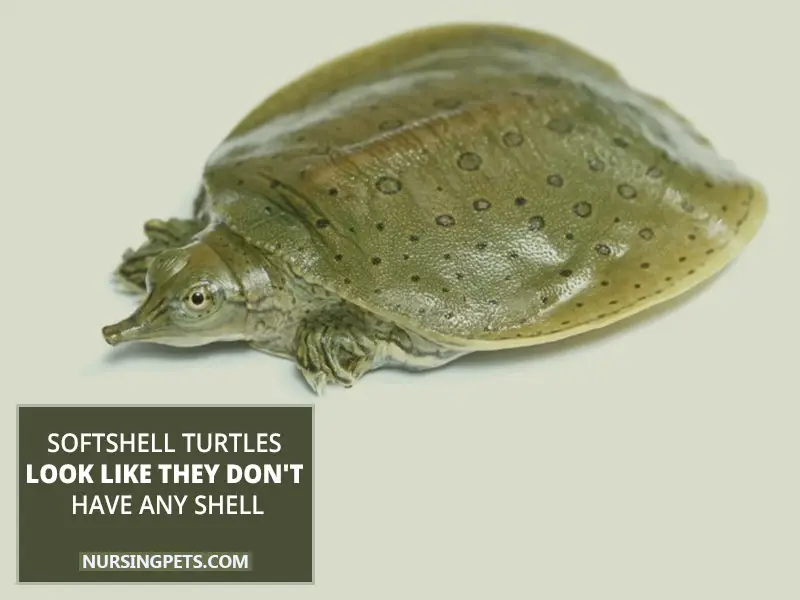
As they don’t have any hard outer shell, many people believe these turtles don’t feature any cover and accept that turtles can live without any, or can leave them, or don’t have any shell at all.
But the reality is quite the opposite. Turtles can’t live without shells. However, many researchers believe that turtle’s ancestors venture into the wild without any shells. With time, they developed their rugged bony structure.
Can Turtles Lose Their Shells? If They Can, What Happens When A Turtle Loses Its Shell?
Naturally, turtles can’t get out of their shells or lose them. However, accidentally these reptiles can lose their shells, such as- they may lose their shells when attacked by predators.

So, what happens when a turtle loses its shell? The short answer is that it will die immediately.
A related article that we covered: Turtles attached to their shells!
As we have mentioned before, turtles’ shells are vital parts of their body; their ribs and vertebrae are linked with their shells, and their shells are joined with their skeletons.
Hence, when turtles lose their shells, internal organs are exposed and damaged. They get injured severely and dehydrated quickly, leading to death. Therefore, if you wonder, “can a turtle survive without its shell?” you got the answer.
If Turtles Don’t Leave Their Shells, Why Do Some People Claim To Spot Turtles Leaving Shells?
Some people believe turtles leave their shells as they have seen these reptiles get out of their shells. But the reality is that those people have witnessed turtles shed their skins.
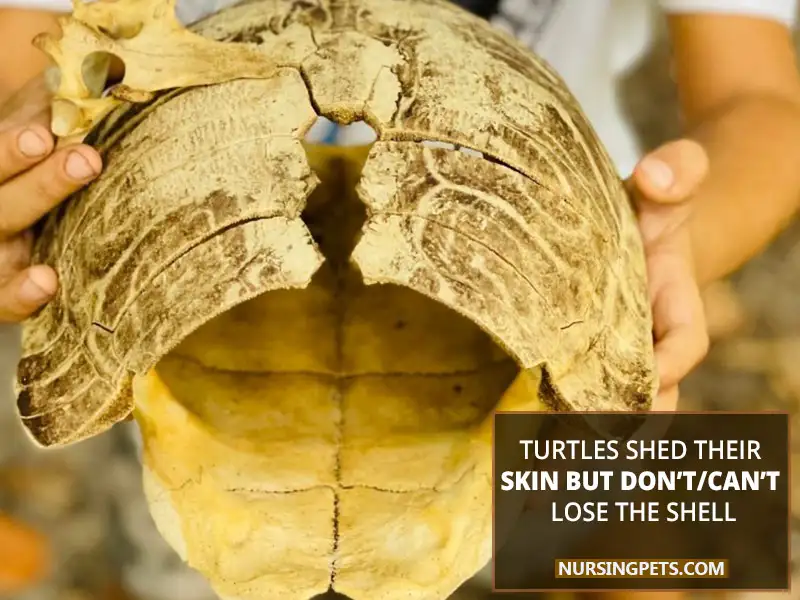
Yes, turtles perform this job like snakes that shed their skins. And these reptiles accomplish this job to accommodate room for growth.
As turtles grow, the pieces of hard layer peel off, and when someone notices this act of peeling, they think turtles are getting out of their shells.
How Do Turtles Shed Their Shells?
Turtles feature epithelium that covers their bony shells and yields robust outer shell layers known as scutes. As turtles grow, their epithelium produces a new and larger scute underneath the old small ones.
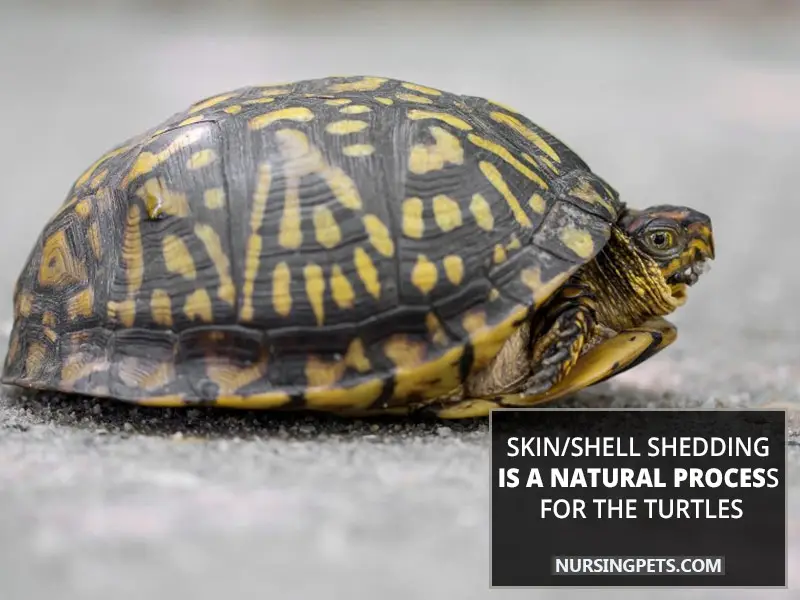
As soon as the new scutes are being developed, old scutes peel off automatically and help turtles’ shells to expand. So, this is how turtles shed their shells.
When Do Turtles Shed Their Shells?
Turtles primarily shed their shells three times: when they age, before hibernating, and after emerging from hibernation. Most turtles shed their shells during this time, but not every turtle species sheds yearly.
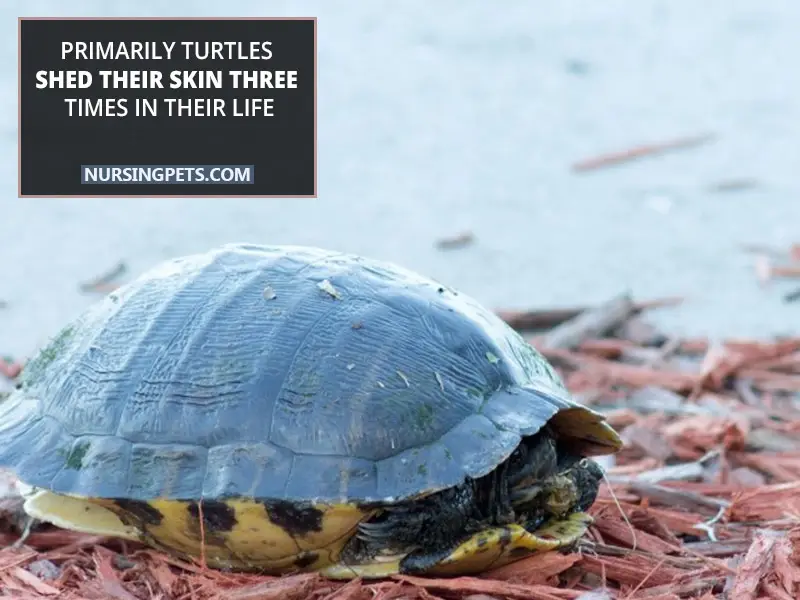
For example, a 2-year-old female red-slider may shed her shell once or twice every month. On the contrary, a diamondback terrapin sheds its shell once every year or once every two years.
Though almost all turtles shed their skins, not all of them shed shells. And the shedding frequency varies from turtle to turtle.
Is Aging The Only Cause For Turtles To Shed Their Shells?
No, a turtle sheds its shell for a couple more reasons. Usually, these reptiles shed their skins when they grow, but other factors can trigger them to shed their shells abnormally. Let’s have a sneak peek into those facts.
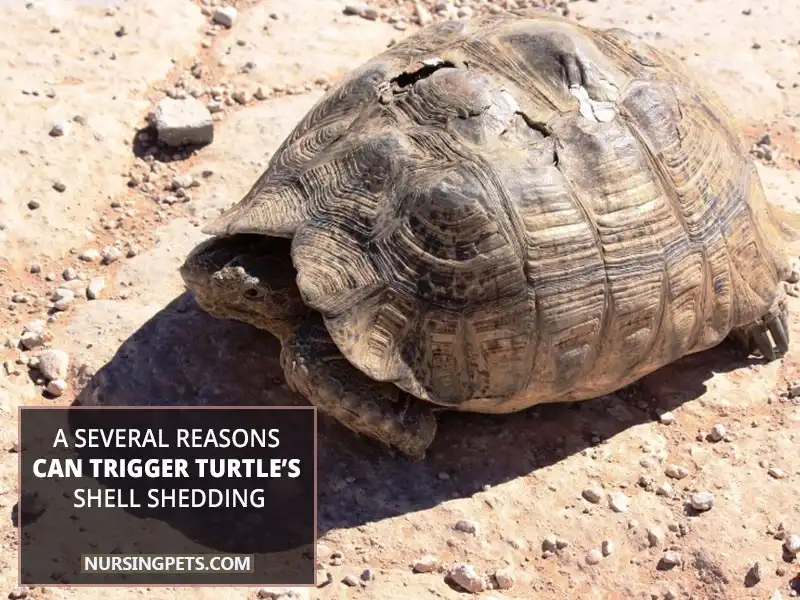
- Overfeeding: if you overfeed your pet turtles, they can grow too rapidly or encounter other health problems, causing them to shed skins.
- Injuries: turtles can shed their shells when they get damaged by sharp objects.
- Basking: Many turtles shed their shells during basking.
- Bacterial Infection: Fungal and bacterial infections can cause a turtle to shed its shell.
- High Ammonia Level: If your tank water contains high ammonia, it can make your turtle shed its shell.
- Vitamin A Deficiency: Turtles suffering from vitamin A deficiency can shed their shells more frequently than healthy turtles.
So, these are some significant reasons why a turtle can shed its shell.
Why Do Turtles Have Shells?
Turtles boast shells for various reasons; these reptiles utilize them as shields against predators. They also use their shells for burrowing. Turtles’ shells help them hide, and this bony structure lets them swim swiftly.

So, it’s evident that without their shells, turtles are vulnerable to predators, disease, and damage. However, you may read this content if you want to know more about why these reptiles feature shells.
To Conclude:
Turtles’ shell is a quintessential part of their body, which helps them survive in the wild; it’s the home for these reptiles. A turtle can’t live for an extended duration without a shell.
Although their ancestors lead a good life without shells, today’s turtles can’t live without shells, nor can they get out of their shells.
All right, that’s it for today’s content; We hope you learned something new about turtles today and will share it on Facebook, Twitter & Pinterest.
Image Source: Canva.com/photos
Article Reference:
- Petkeen.com/can-turtle-live-without-its-shell/
- Theatlantic.com/science/archive/2016/07/the-turtle-shell-first-evolved-for-digging-not-defence/491087/
- Thesprucepets.com/turtle-shells-peel-1238366

